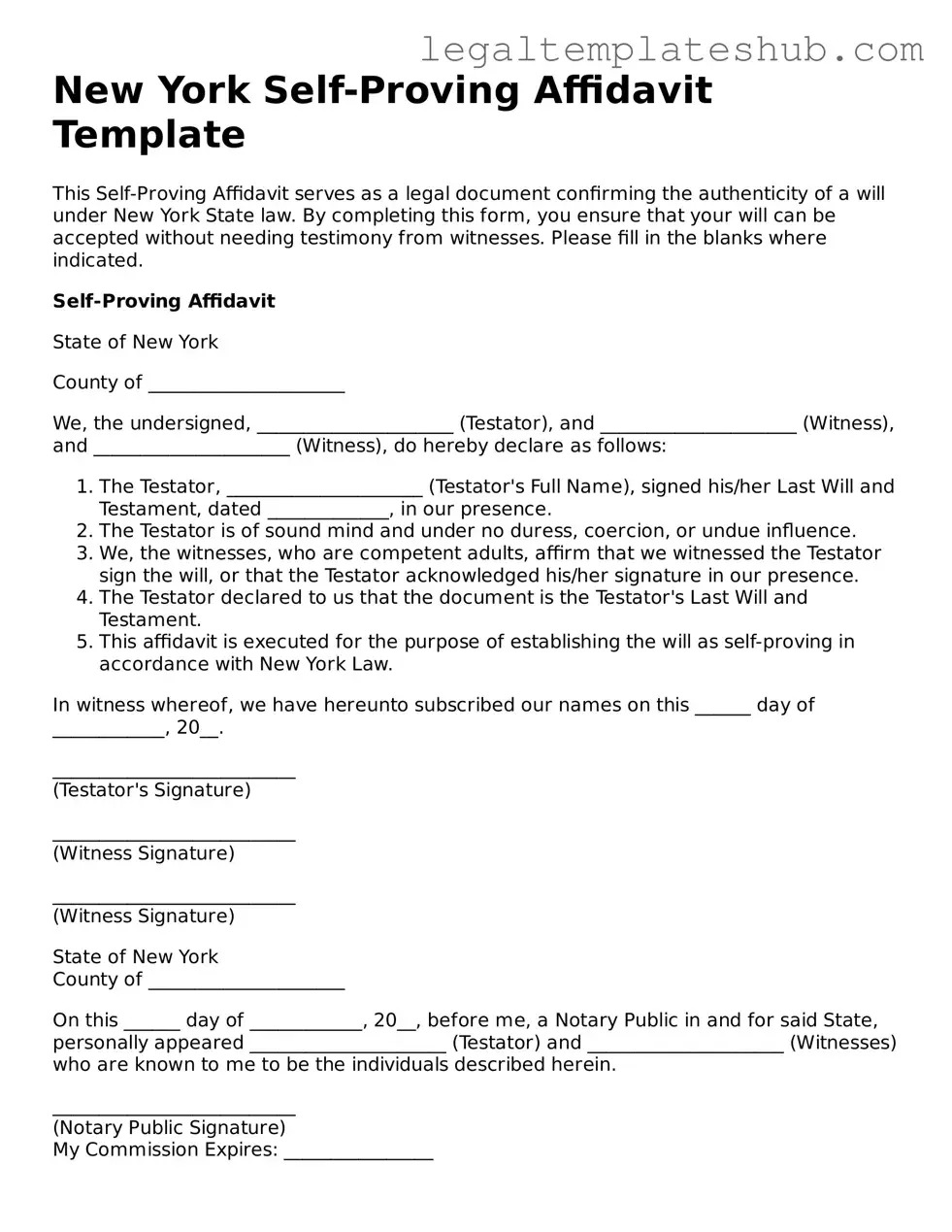Instructions on Filling in New York Self-Proving Affidavit
Once you have the New York Self-Proving Affidavit form ready, you’ll need to complete it accurately. This form will help streamline the probate process for your will. Follow these steps to ensure everything is filled out correctly.
- Begin by entering the date at the top of the form. This should be the date when the affidavit is being signed.
- Provide the name of the testator, who is the person making the will. Write their full legal name in the designated space.
- Next, include the address of the testator. This should be the current residential address.
- List the names of the witnesses. There should be space for at least two witnesses. Write their full names clearly.
- Record the addresses of the witnesses next to their names. Make sure to include the full address for each witness.
- Each witness should sign the form in the designated area. Ensure they do this in front of the testator.
- Finally, have the testator sign the affidavit. This should be done after the witnesses have signed.
After completing the form, make sure to keep a copy for your records. You may need to present this affidavit during the probate process to validate the will.
